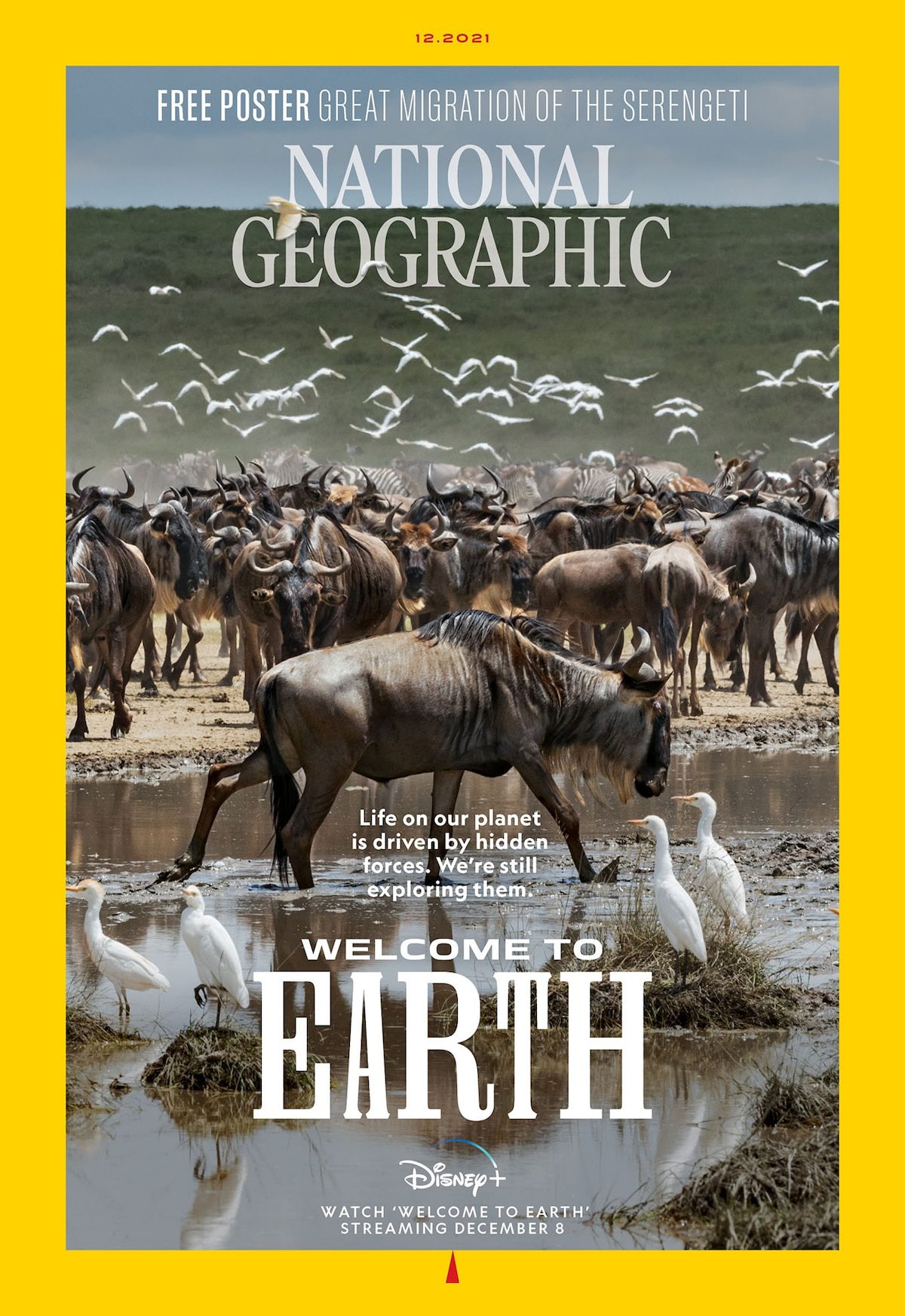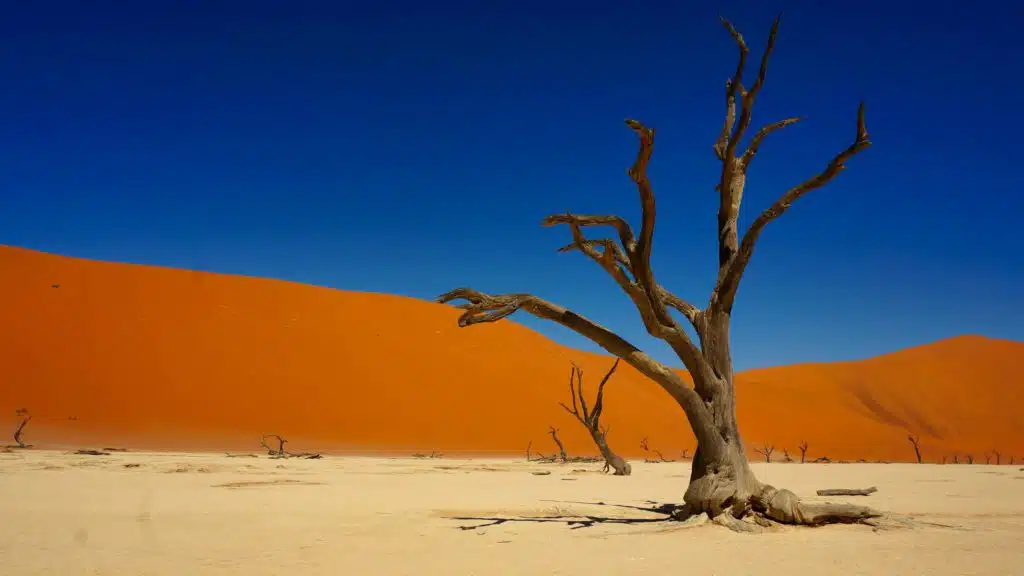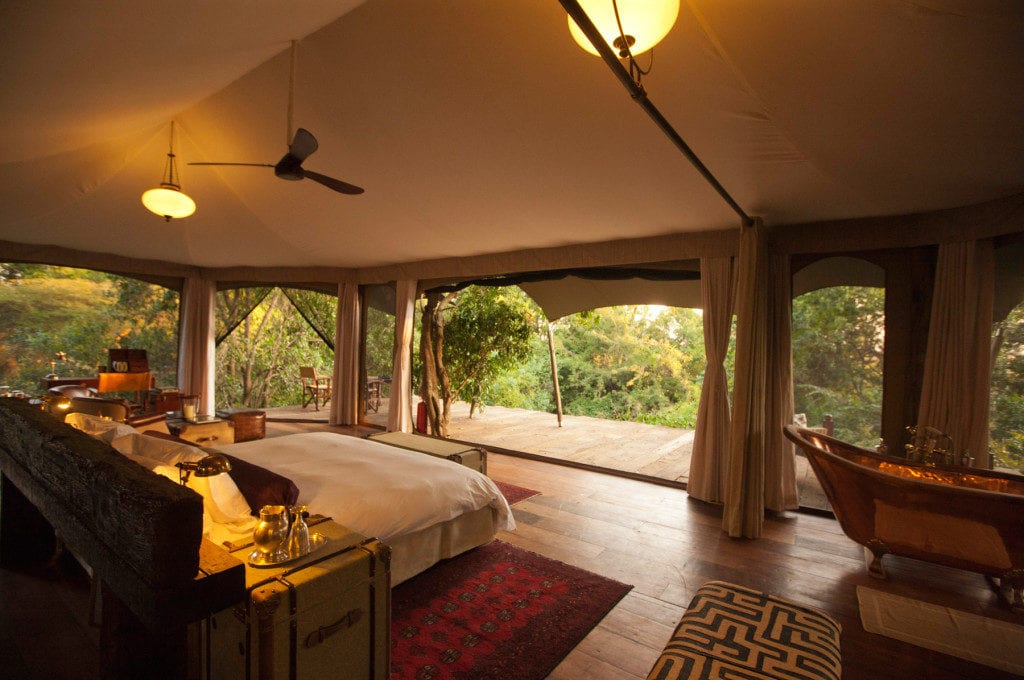NATIONAL GEOGRAPHIC SAFARIS
The Experts’ Choice
For almost 150 years, National Geographic safaris have been amazing and inspiring us.
Each turn of their yellow-bound pages evokes unparalleled adventure and wonder, inspiring us to look beyond our backyards, venture into the world and discover new places, people and creatures.
Award-winning photographers spend their lifetimes capturing the incredible, illuminating the familiar and portraying the unfathomable. Writers imbibe us with a sense of exhilaration, conveying in words all that the images depict and educating us on lands we might never reach.
So too do they share the achievable, adventures within our grasp if only we are willing to explore.
Though those lucky enough to call themselves staff members at this inimitable and pre-eminent publication often plunge into the unknown, journeying for days and weeks, documenting for months and even years, we are the lucky ones, having our eyes opened to the wonders of the world, and the door opened to our own enjoyment of such wondrous sights and destinations.
No printed image or black narrative upon a white page can truly express the spectacle of witnessing these scenes firsthand but, fortunately for us, the world has become infinitely more accessible since the reams of National Geographic first found their viewers in 1888.
For your inspiration and, perhaps, your future indulgence, these are some of the foremost National Geographic safaris compiled by National Geographic’s Traveller magazine:
Grootbos Private Nature Reserve, South Africa
Located in South Africa’s Western Cape, the rolling hills of Grootbos are festooned with radiant flora, attracting a unique collection of birdlife and animals.
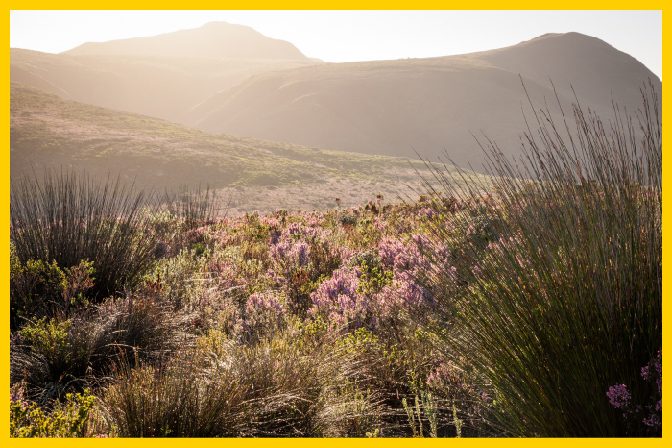
Not a National Geographic safari in the most conventional sense, Grootbos nonetheless holds vast appeal and comprises an exceptional landscape that perfectly complements with more quintessential wilds of Africa.
A birdwatcher’s paradise, here you can find the stunning African paradise flycatcher, the vibrant Malachite sunbird and a host of raptors and migratory species.
The mammalian inhabitants of Grootbos, some of which are found nowhere else, include antelope, jackals, cape leopard and, if you’re very lucky, patient and willing to stay out after bedtime, the long-legged lynx-like caracal.
But Grootbos is predominantly about the landscapes. Its sweeping, majestic hillsides are wonderful to explore on foot or horseback, or simply to enjoy from your luxurious balcony with a glass or three of the finest local wines. Fynbos fields cascade down to the rugged coastline, and it is here in the tempestuous South Atlantic that you can find the marine Big Five: the southern right whale, the bottlenose dolphin, the African penguin, the Cape fur seal and, for the daring, the great white shark.
Luxury abounds in Grootbos, and premier contemporary villas cater exquisitely to private and family groups. With the Cape Winelands only a short distance away, amateur sommeliers will enjoy sampling the region’s world-class, award-winning wines, especially when perfectly paired with gourmet cuisine.
National Geographic safaris are invariably about diversity, about discovering sights and experiences found few other places in the world. In this sentiment, Grootbos is exceptional.
Mana Pools National Park, Zimbabwe
Though perhaps slightly in the shadow of Kenya, Tanzania and South Africa, Zimbabwe has a vast amount to offer on a National Geographic safari.
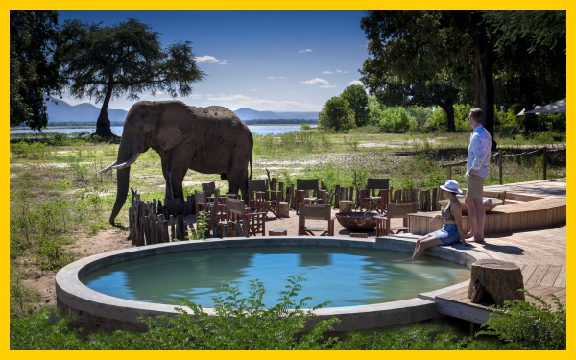
From the magnificence of Victoria Falls to the grasslands of Hwange National Park, one can explore numerous breathtaking landscapes within one country.
The World Heritage-listed Mana Pools National Park lies on the Lower Zambezi River bordering Zambia. Through the dry season, the river provides hydration for a wealth of wildlife, and when the rains fall the area opens into expansive floodplains, akin – though very distinctly different – to the Okavango Delta in neighbouring Botswana.
Though a national park, Mana Pools enjoys a distinct level of intimacy. While some areas are more heavily trafficked, only a handful of properties exist on the shores of the meandering Zambezi, affording visitors the opportunity for pure escapism. Canoeing and walking safaris are exceptional here, and the tranquility enjoyed while slowly drifting on the calm waterway allows you to observe nature undisturbed – a particular benefit for avid photographers.
Nature is in abundance in Mana Pools. Large herbivores – including hippo, buffalo and elephant – flourish in this lush and fertile landscape, but predators, too, lurk in equal number. Though lion numbers are lesser than in some other parks, leopard, hyena, wild dogs and cheetah all populate Mana Pools, and crocodile make swimming distinctly unfavourable!
For bird lovers, few places in Africa parallel the plethora found in Mana Pools. Waterfowl, including grebes, pelicans, flamingo and heron, can be spotted feeding in the rich waters, and several species of vulture and hawk patrol the skies for carrion and smaller prey.
What makes Mana Pools a particularly exceptional National Geographic safari destination is the sheer volume of life in a relatively small region. If you wish to view a huge diversity of animals, it is one of the finest single locations you can visit.
Namib Desert, Namibia
Few destinations are so unequivocally unique as the Namib Desert and Sossusvlei. The scenery alone – both in its immense plains and towering dunes and in the sky at night – makes it worthy of a place amongst the most notable of National Geographic safaris. The beauty of this is that one is almost forced to relax, unwind and immerse in this anomalous region.
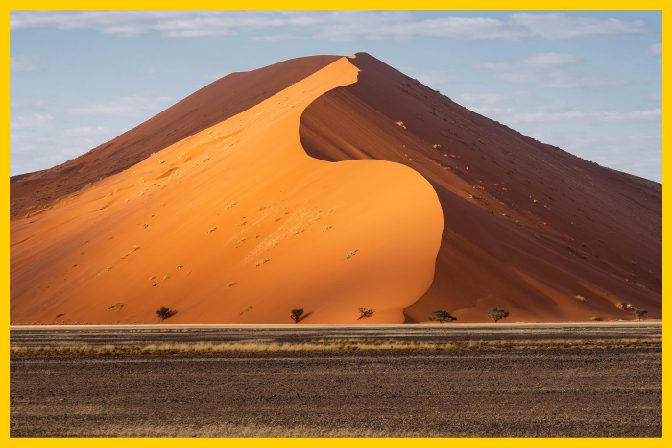
Accommodations are equally as atypical, and luxurious lodges, stunning architecture and classically-inspired camps provide indulgent surroundings and exceptional service.
Exploring this landscape is imperative, and the immense boulders and rocky outcrops offer an incredible panoramic vantage point from which to survey the topography.
Equally as fascinating is the culture, and the Himba people of the region, who have subsisted on this arid land for centuries. Their otjize-coated skin and hair is strikingly beautiful, and their humble dwellings and simple way of life are equally as endearing.
The wildlife of the Namib is understandably hardy, surviving by continually wandering the plains in search of minimal shrubbery, water holes and prey. Many have adapted specifically to the region, such as the majestic oryx, or gemsbok, which gain enough hydration from their food alone to be able to survive this challenging environment.
Lions likewise have adapted, and unlike their cousins of more aqueous environments can go without water for long periods.
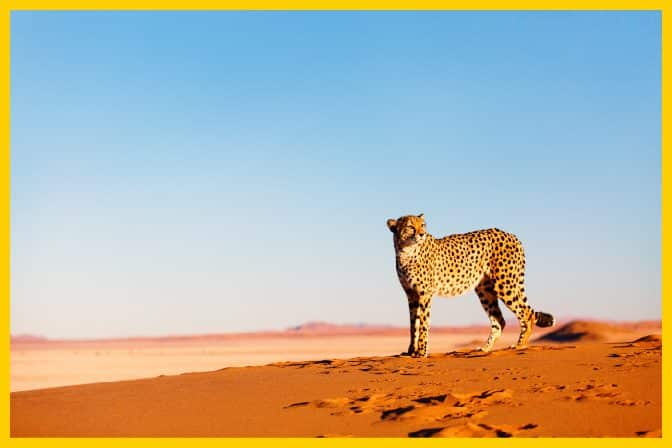
Elephant, rhino and giraffe have also come to be able to survive the Namib, and share the dunes with bat-eared foxes, jackals, ostriches and cheetah. Epitomising this tale of adaptation is one of the Namib’s smallest residents – the fog beetle. Residing closer to the coast, where cool winds sweep off the Atlantic to meet the hot air rising from the desert, this little black invertebrate can be found doing yoga at dawn, arching its body into a headstand, the morning’s dew condensating on its back to trickle down towards its mouth for a cool, fresh daily drink.
Life for visitors in the Namib is unlike anywhere else in Africa. Time stands still, you take wonder at the smallest of inhabitants, you appreciate life on a different scale – both the immense and minute – and you enjoy life at a slower pace, relishing the absolute tranquility of this unique National Geographic safari destination.
Olare Motorogi Conservancy, Kenya
No National Geographic safari quite instills such awe as the Great Migration of the Serengeti and Kenya’s greater Maasai Mara region.
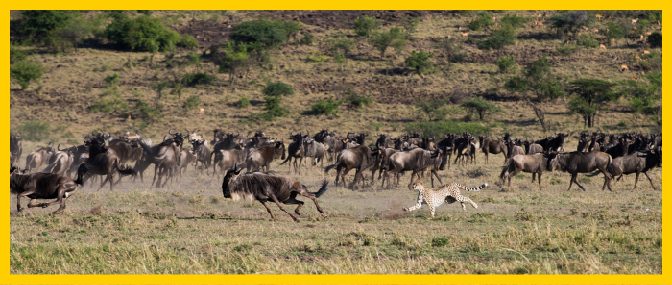
Established by National Geographic explorers-in-residence Dereck and Beverly Joubert, Mara Plains Camp takes full advantage of this wonder of the natural world. As one might expect of a National Geographic-endorsed, Relais & Chateaux venue, Mara Plains Camp combines exceptional luxury with superb conservation efforts.
One of the primary beauties of Olare Motorogi is that it is reputed to have the lowest vehicle density in the Maasai Mara region, while also having the highest concentration of big cats anywhere in Africa.. This ensures that you will enjoy exceptional wildlife viewing shared with very few other visitors. Impeccably positioned on the meandering Ntiakitiak River, the luxury Mara Plains Camp provides not only comfort and an excellent venue, but also an ideal base from which to explore the grasslands and witness the Great Migration.
Extensive conservation in the area creates an incredible abundance of wildlife within the Olare Motorogi Conservancy. Year-round, giraffes, wildebeests, warthogs and zebras can be seen, keeping a perpetually wary eye out for cheetah, leopard and lion, as well as scavenging carnivores such as hyena.
Even within the pages of National Geographic, it would be almost impossible to capture and convey such an iconic safari experience. Many regions of Africa have their own distinct aspects, but Olare Motorogi is one of those rare destinations in which you can capture the very epitome of an African safari so succinctly and abundantly.
Selous Game Reserve, Tanzania
Though the Serengeti gains much of the attention of visitors to Tanzania, Selous Game Reserve – renamed in 2019 in honour of Tanzania’s first president to Nyerere National Park – is our final National Geographic safari destination. The expansive park, the largest protected game reserve on the African continent, rangers from rivers and lakes to grassy plains, forests and mountains, encompassing with it all the wildlife that thrives in this protected reserve.
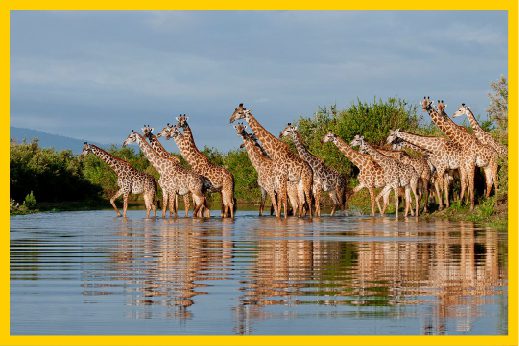
Many of the more familiar African animals can be readily spotted, along with a few less prevalent, including Lichtenstein’s hartebeests, waterbucks, elands, bushbucks, puku antelopes and African wild dogs.
The region’s former history as a hunting reserve led to the decimation of the park’s elephant population, but these are slowly finding home and safety once more in Nyerere.
Its size coupled with its lesser renown to the Serengeti makes Nyerere wonderfully underpopulated. A dichotomy of landscapes also provides incredible scope for safari opportunities, from waterborne adventures to walking treks with sublime nature spotting.
With many parks and reserves, the reason for visiting can be quite specific, absolutely wonderful, of course, but limited in diversity. Nyerere defies that generalisation, and you can find a wealth of varied experiences within its boundaries. Such is its nature that, from day to day, you never know quite what to expect and, where one exploration might be on a conventional game drive, the next might take you along the banks of a river on foot or into forests where zebra seek shade and leopard search for secure limbs to hide their catch.
The Big Five can also be spotted in Nyerere. Though not yet flourishing, elephant are growing in number, with lion, leopard, Cape buffalo and black rhino all present.
National Geographic safaris define themselves in their uniqueness, yet also in their embodiment of what safari has come to mean to so many via Geographic’s pages, images and films.
This collection of safaris not only places the many faces of Africa in your awareness, it also allows them to smudge the pages of your passport, and mark themselves indelibly upon your imagination and memory, taking the unattainable wonders of the world and placing them within reach.
To explore Africa is to walk through the library of photos and tales woven by National Geographic. Venture into their world – contact your Travel Designer today to weave your own tale of Africa.

